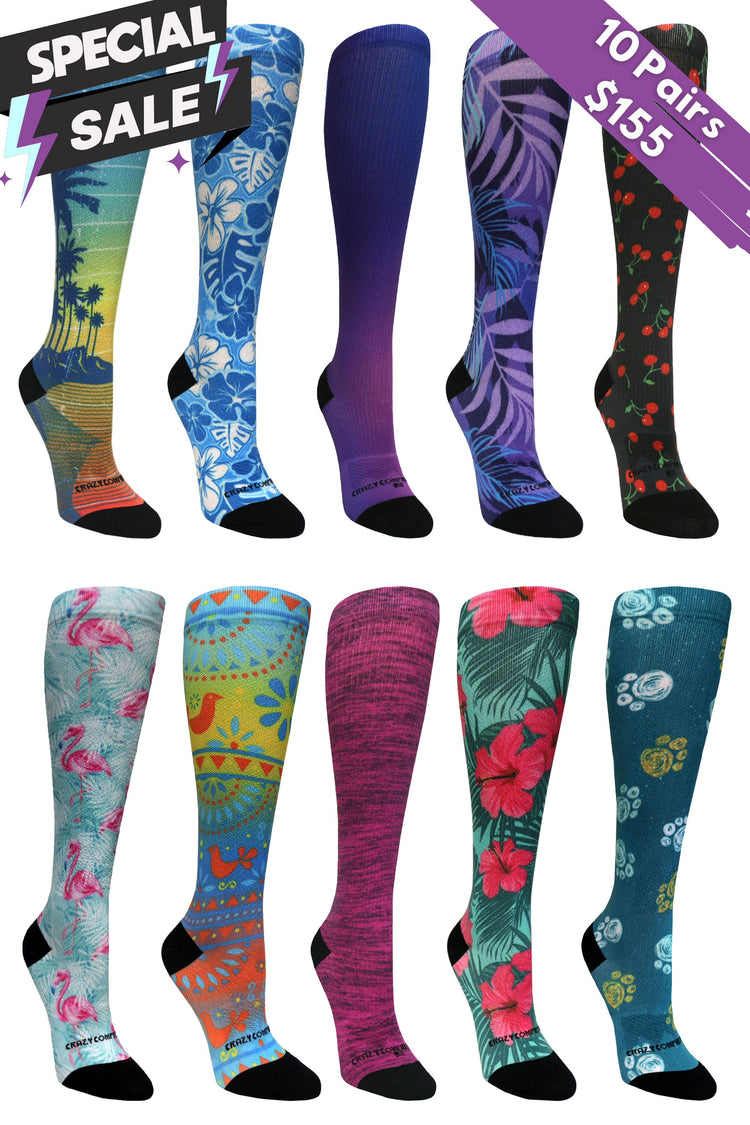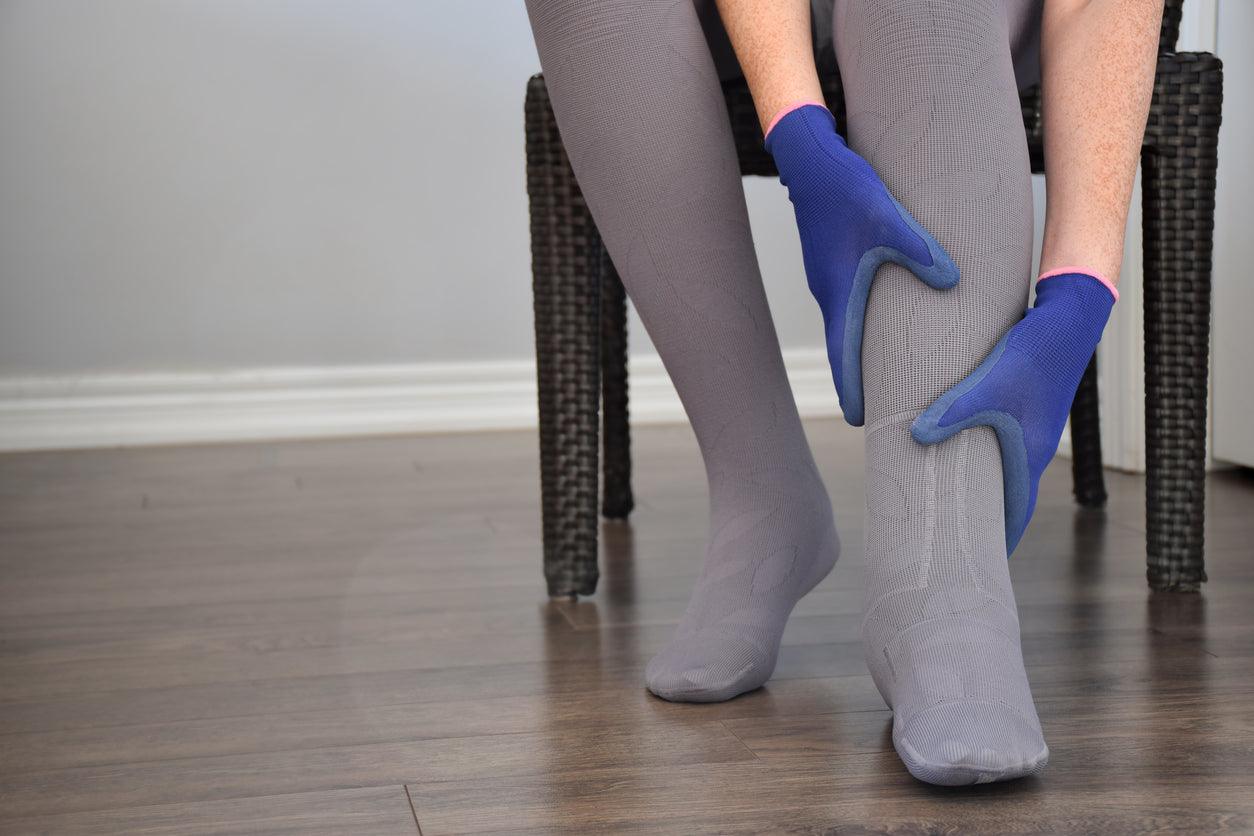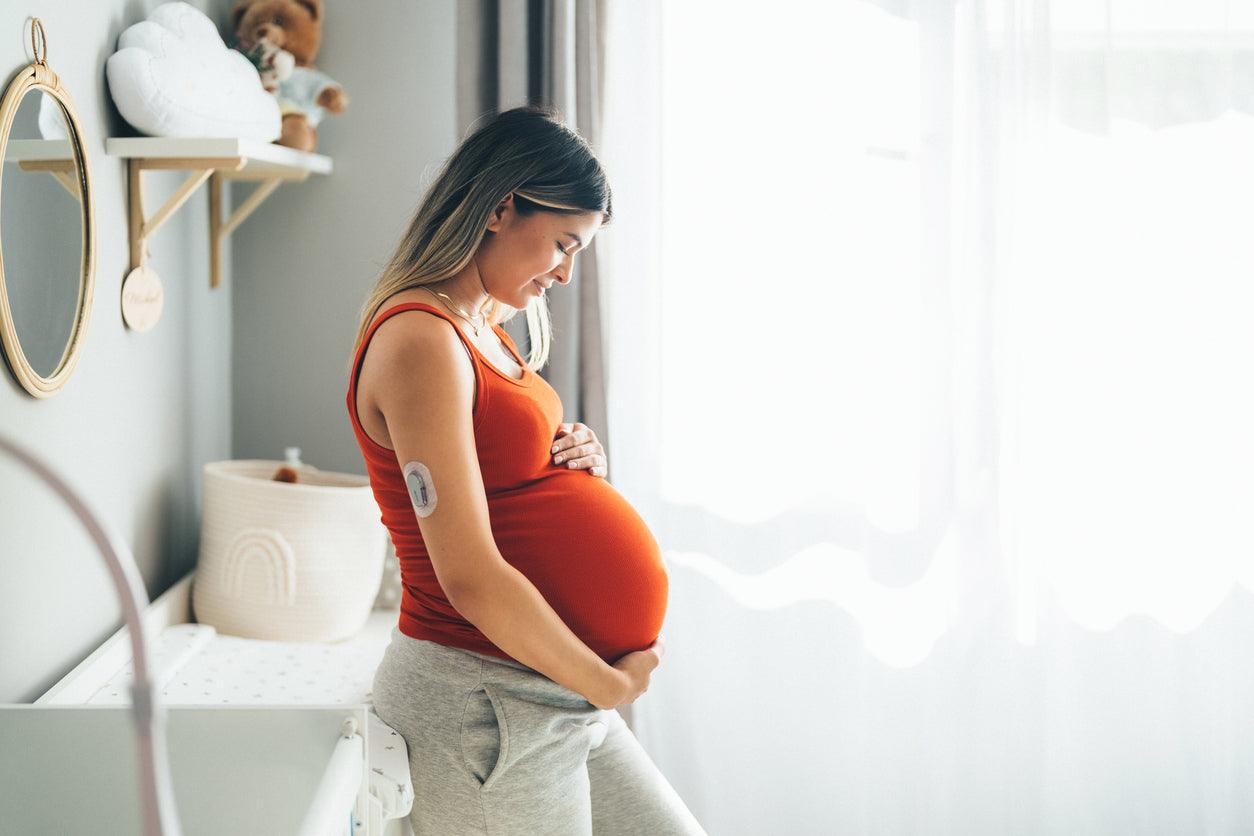If you’re a frequent flier, suffer from swollen legs and feet, or are just looking to boost your circulation, then compression stockings may be the solution. Also known as compression socks, these form-fitting garments give the veins in your legs extra support so you take on your day in comfort.
But how do they work? And who can reap the greatest benefits from graduated compression stockings? We’ve rounded up everything you need to know about this carefully designed footwear to help you find your perfect pair.
What Are Graduated Compression Stockings?
Graduated compression stockings are socks that are designed to exert tapered pressure to support circulation in the lower legs and feet. They can have an enclosed or open toe, and they generally extend up to or over the knee to maximize the compressive benefits throughout the legs.
Graduated compression refers to how the “squeeze” is distributed along the sock. Graduated compression stockings are the most firm at the feet and ankles, and the pressure relaxes toward the knee. This smooth, intentional construction means that the most compression is applied at the extremities that are furthest from the heart.
Compression stockings come in different levels of compression, ranging from over-the-counter daily support socks to prescription compression stockings to be used under medical supervision. It’s measured in mmHg—or millimeters of mercury—which is a standard measurement of pressure.
Compression Socks and Your Circulatory System
The circulation system is made up of arteries that take blood away from the heart, veins that carry it back, and the heart itself pumping blood throughout the body. Graduated compression stockings are designed to improve your body’s ability to move blood back to your heart from the lower extremities, where gravity, circulation problems, or lifestyle factors can cause it to pool.
By applying firm pressure to the legs, graduated compression stockings enable a boost in blood flow that allows your arteries and veins to relax. This creates a healthier and more sustainable workload for your body. Also, by having more compression at the feet than at the knee, the blood is encouraged to keep moving up veins and back toward the heart. The result? Reduced swelling and inflammation, improved lymphatic drainage, and a reduced risk of blood clots or DVT.
The Benefits of Graduated Compression Stockings
The increased circulation from graduated compression stockings can come with a wide range of benefits. These include:
- Relief from tired, achy, heavy legs
- Reduced swelling and inflammation in the ankles, legs, and feet
- Lowered risk of blood clots or DVT
- Less dizziness when standing up
- Faster recovery after athletic performance
- Varicose and spider vein prevention
Are Graduated Compression Stockings Right for Me?
Because the benefits of compression socks and stockings are so varied, many people can use them to improve their health and everyday comfort. These include:
- Frequent flyers: Airplane travel comes with a higher risk of developing blood clots—not to speak of sore, puffy legs—so compression hosiery can help passengers and staff stay safe and comfortable.
- Those who spend long periods on their feet: Whether you’re a nurse, a factory worker, or just have a job that requires you to stand for long periods, you may suffer from swollen, uncomfortable lower legs. Compression stockings can make your shifts a little bit more enjoyable!
- People with disabilities: Wheelchair users and patients on bedrest can also benefit from the circulation boost of compression garments.
- Pregnant people: Pregnancy can affect the circulatory and lymphatic system, causing uncomfortable swelling and a higher risk of blood clots. Compression stockings can help alleviate the discomfort.
- Athletes: Graduated compression can help both during and after activity. Improved circulation can increase performance and reduce recovery time after working out.
- Those at risk for circulatory or lymphatic problems: Conditions such as diabetes, orthostatic hypertension, chronic venous insufficiency, or lymphedema can cause blood or lymph to pool in the lower legs. Graduated compression stockings can help combat swelling and boost circulation.
How to Wear Graduated Compression Stockings
Compression hosiery should be put on first thing in the morning before your legs have had a chance to swell. Make sure both the socks and your legs are clean and dry to prevent blisters or discomfort.
Here’s how to put them on:
- Take the top of the stocking and roll it down to the heel.
- Place your foot inside the sock, lining the heel up.
- Start to pull the stocking up while unrolling it up over your calves.
- Once it’s in place, smooth out any wrinkles and repeat on the other leg.
Meet Crazy Compression
Graduated compression stockings are a simple, accessible way to boost your circulation and find some comfort, no matter your lifestyle. If you’re looking to add compression socks to your healthy lifestyle, then look no further than Crazy Compression.
With graduated compression stockings for men and women, Crazy Compression makes high-quality compression socks that fit into your daily routine. With graduated compression of 15-20mmHg, our high-quality footwear will keep your legs and feet feeling fresh, energized, and comfortable all day long.
And the best part is, our socks come in neutral styles, fun pattern options, and a range of fits because Crazy Compression is committed to bringing the benefits of graduated compression to you without cramping your body or your spirit. Try them for yourself and get ready to step out in comfort and style!

































Leave a comment
This site is protected by hCaptcha and the hCaptcha Privacy Policy and Terms of Service apply.